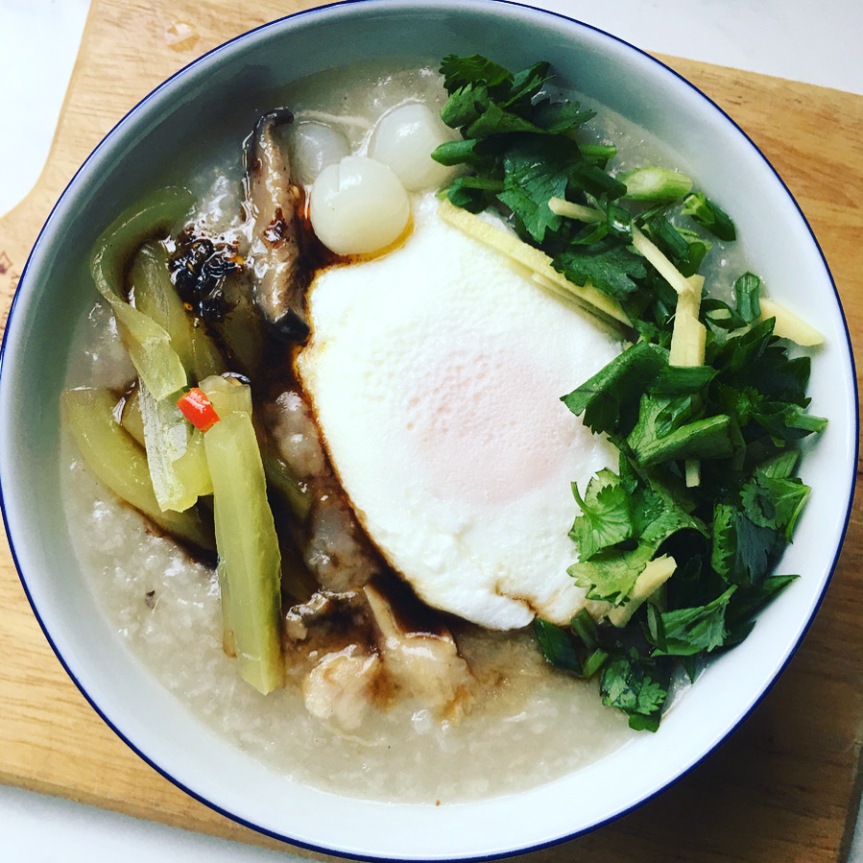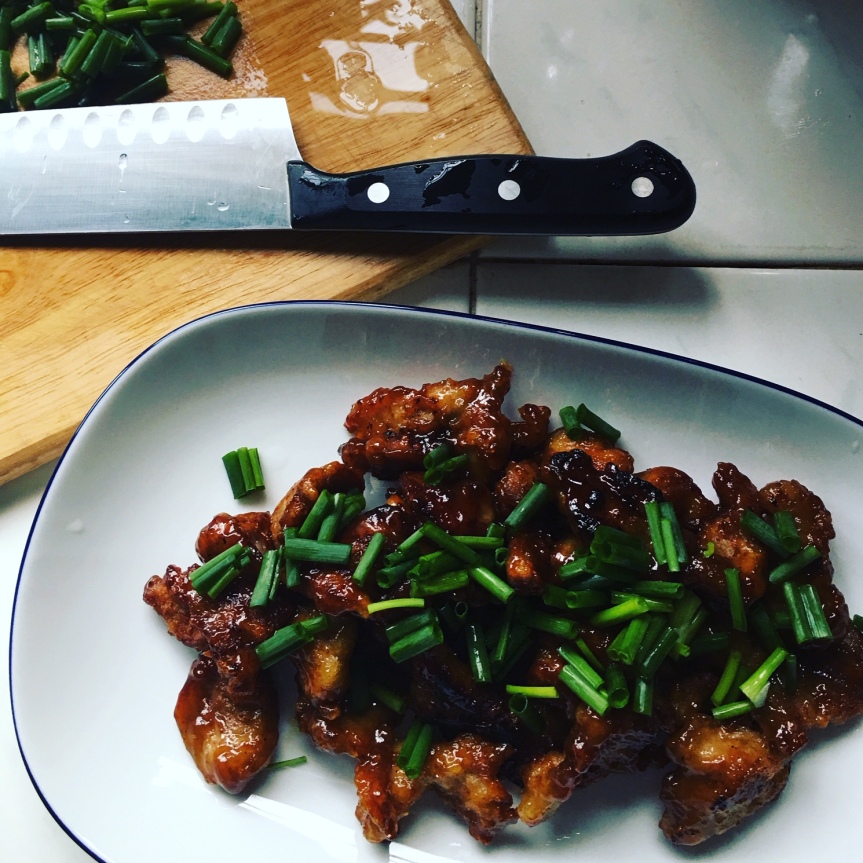
Congee or jook in Hakka is a breakfast staple in Chinese families. Jook also makes a light simple supper. It’s nutritious, a one bowl meal that includes carbs, protein, and vegetables. Very textural, it combines fresh flavours with preserved, so you get crunchy, crispy, salty, tangy, aromatic, and sour all in a spoonful. It takes hours of simmering to get the rice this soft. However, this version was not simmered on the stove but in a slow cooker, thanks to a recipe by Melissa Clark at New York Times Cooking. She uses short grain rice, which I never thought of, and which makes a lot of sense. It’s starchier than long grain rice, and makes a perfect porridge. I recommend smashing the ginger to get a stronger gingery flavour in the rice. Drawback: it takes up to 10 hours to cook before you can sit down and enjoy it. So if you want congee for breakfast, you’ll have to set it the night before. Traditionally in Thailand, joke as it is called here, is served with a raw egg cracked open in the middle of the steaming hot porridge. The heat of the rice coddles the raw egg to an ethereal creamy consistency. However, I think raw eggs are risky so I poached mine. A runny soft egg in congee is delicious.
Congee (adapted from Melissa Clark, NY Times Cooking)
Time: 8-10 hours
Yield: 4 servings
For the Congee:
1/2 cup short-grain rice
6 cups water
1 inch knob of fresh ginger, peeled and smashed
2 shiitake mushroom caps, stemmed
2 chicken thighs, bone in, trimmed of fat with skin removed
White pepper to taste
2-4 poached eggs
For the accompaniments:
1/3 cup pickled vegetables, chopped into bite size pieces
1 tablespoon fried shallots (available in jars at the store)
1 tablespoon fried garlic (available in jars at the store)
1/4 cup diced scallion
1/4 cup diced cilantro
1 tablespoon fresh ginger peeled and slivered
chili oil, to taste (Available in stores, but I recommend Fuchsia Dunlop’s recipe)
Maggi seasoning, to taste (can use low sodium soy sauce instead)
Put rice and water in the ceramic bowl of the slow cooker. Add the ginger, chicken and white pepper. Stir. Cook on high for 1 hour. Skim off any scum and reduce to low. Let simmer 7-9 hours or until the rice has swelled, is soft and mushy, and the water is thickened. Remove the ginger and discard. Remove the mushroom caps and slice into slivers and return to the pot. Remove the chicken and shred with a fork. Return shredded chicken to the pot, discarding bone and gristly parts. Meanwhile, poach eggs. Spoon congee into bowls, top with one egg each per diner, and serve immediately with accompaniments.
Variation:
Make a pork meatball version, another Thai tradition. Season a 1/2 pound of ground pork with salt and pepper. Make small meatballs, about 1 1/2 inches in diameter. One hour before cooking time is up, add the meatballs and cook for 1 hour until no longer pink.

